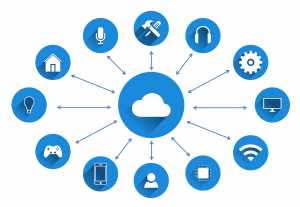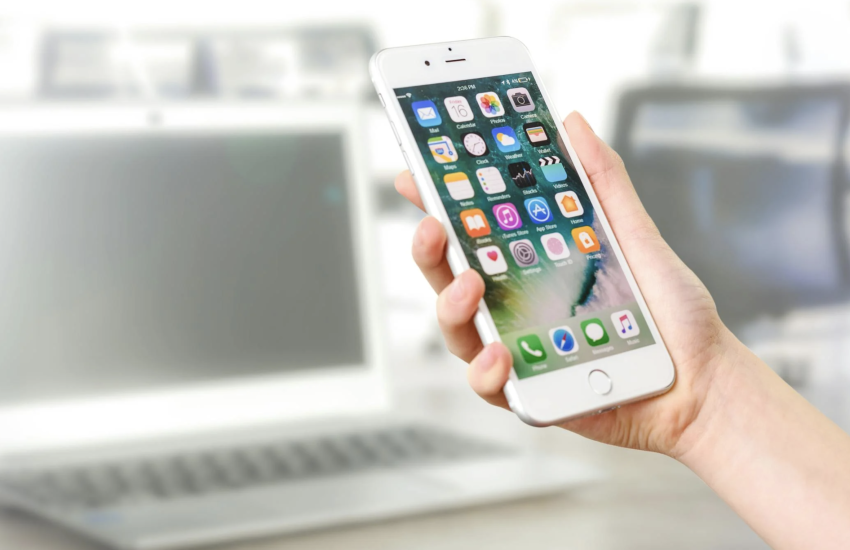7 Ways How IOT Can Beneficial in App Development Process

Internet of Things (IoT), representing a connected reality comprising a plethora of gadgets and sensors, is impacting our lives in a never-before manner. No wonder in the fact that a fair share of this impact is visible on mobile apps as well. Mobile apps that played as the controlling system for a plethora of IoT devices are now subjected to the impact of this connected ecosystem now.
Here we are going to explain some of the ways the Internet of Things is impacting mobile app development. But before that, let us spare a few words on the basis of the Internet of Things (IoT).
What does IoT exactly mean?
IoT or Internet of Things represents a connected ecosystem of devices and sensors. The mutual connection among multiple devices and sensors allows better control, easier operation, and context-aware uses of the devices and sensors by the users. For example, a connected coffee maker or a surveillance camera can be controlled remotely through a connected mobile app.
Over the years, the Internet of Things has evolved and traveled a full spectrum. From becoming an ecosystem of smart home gadgets, IoT now represents connected devices in public places, workplaces, and industrials. Thus we have Industrial Internet of Things and connected ecosystems for smart city environments.
How IoT impacted Mobile App Development?
As the IoT ecosystem is extending to every nook and corner of our lives, ideas such as smart homes, smart workplaces, smart transport, and smart cities are also increasingly becoming common. As of now, mobile devices have mainly served as the key interacting device for IoT devices to work.
Mobile devices and smart connected gadgets interact through a host of advanced technologies such as Wi-Fi, NFC, Bluetooth, etc. Thanks to these connectivity solutions keeping mobile and other gadgets connected, the connectivity standards have seen an overwhelming impact. Mobile apps for various niches are utilizing this smart connectivity to boost user interactions and business conversion. For example, the NFC connectivity helped retail stores embracing mobile payment for transactions.
The impact of IoT on mobile apps is visible in countless ways. From controlling the fitness gadgets and wearables and remaining connected and synced on both wearable and handheld have become possible thanks to this marriage of the Internet of Things and mobility. Remote surveillance systems allowing users monitoring the security camera systems miles away is another major example of this impact. The connected beacons in a retail outlet tracking the location of the customers through a connected mobile app is another great example of how connected ecosystems through mobile devices us impacting retail and sales.
Well, while the impact of IoT on mobile apps is easily understandable, we need to take a closer look at the impact of this connected device ecosystem on mobile app development in particular. Here we are going to explain some of the key ways the Internet of Things transformed development practices.
Future-ready development
IoT apps representing a smart ecosystem are often considered futuristic, and this requires mobile apps to get ready to facilitate the connectivity of these mobile devices. The apps that don’t provide support for connected devices such as Amazon Alexa, Google Home, or similar devices may actually look outdated very soon. So, getting IoT-ready became imperative for the apps now.
Increasing demand for IoT specialization
For app developers and development companies across the niches, IoT apps have become a key specialization that everyone is after to include in their portfolio. Already thousands of app development companies provide this service specialization as part of their portfolio.
A new approach to user control
For app developers developing consumer apps for specialty niches such as surveillance and security systems, camera and image processing apps, and car audio apps, the user control became simplified thanks to the IoT apps helping with a consolidated app interface to control the intended device in an effortless manner.
More control on data safety and data security
Thanks to the connected IoT apps working as the consolidated interface for monitoring and controlling multiple devices in homes and workplaces, the concerns over data safety and data security have now reduced. App developers working for IoT apps only need to adhere to the optimum cybersecurity norms to protect the device data and security breaches. The app security is now intricately connected with the device security thanks to IoT apps, and this helped reduce the security concerns.
Some of the key ways IoT positively impacted the app development process include the uncompromising adherence to security recommendations and license agreements, ensuring optimum hardware capability, maintaining programming protocols, etc.
IoT, Cloud and Edge Computing
One of the biggest ways IoT impacted mobile app development is by establishing cloud as the principal platform to manage device and app data and to help multiple interfaces to stay in sync. In-memory computing and edge computing have also evolved as the latest technologies to allow devices to get access to crucial computing needs locally when no internet connection is available.
Conclusion
Finally, IoT and mobile apps together build a larger ecosystem that gave birth to a whole array of new technologies, development approaches, and user experience standards. The relation between the Internet of Things and mobile app development seems to be too fervent and promising to give birth to a lot of innovations in the years to come.
Author Bio
Paul Osborne is Chief Technology Officer at Mobile app development company. Well known IT company providing service of app & web development around the globe. He loves to involve himself with new technologies by reading, researching, and like to write about app & web development.















